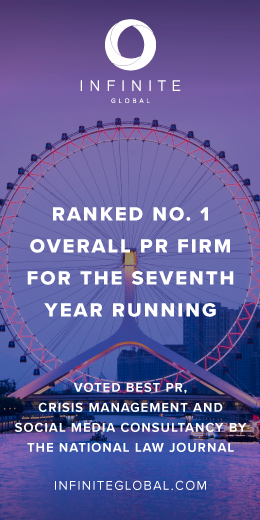By Hayley Winograd
Reprinted with permission of the New York State Bar Association © 2022.
Justice Sandra Day O’Connor could not get a job at a law firm after graduating from Stanford Law School in 1952.1 “When I was first looking for work, they just weren’t hiring women, period,” she said.2 After declining an offer for a position as a legal secretary, O’Connor took a position as a deputy county attorney in San Mateo, California, offering to work for no salary.3 O’Connor went on to start her own law firm in Phoenix, Arizona on her way to becoming the first female associate justice of the Supreme Court of the United States.4
Justice Ruth Bader Ginsburg, one of 10 female law students in her Harvard Law School class in 1956 with more than 500 men, was once questioned by the dean, “Why are you here occupying a seat that could be held by a man?”5 Despite graduating first at Columbia Law School in 1959, Justice Ginsburg was not offered a job by any of the 12 firms at which she interviewed.6 “Probably motherhood was the major impediment,” she said. “The fear was that I would not be able to devote my full mind and time to a law job.”7 How far women have come in 70 years. But we are not quite there yet.
For over two decades, women have made up roughly one-half of all law school graduates, and since 2016 have made up the majority.8 Women currently represent roughly one-half of all law firm associates at the 200 largest law firms in the United States, often referred to as “big law.”9 Yet, gender disparity is alive and well when it comes to women in leadership positions at such firms. Women currently represent less than one-third of all partners at firms, and less than a quarter of managing or equity partners.10 Women are likewise underrepresented in executive or management roles at these law firms, with women comprising less than a third of the members of those committees.11 The gap in leadership positions is even wider for women of color. While women of color currently make up 20% of first year law students, they take up only about 3% of equity partners.12
Women are leaving law firms at disproportionate rates to men.13 In 2020, 42% of attorneys who departed their law firms for any reason were women, despite the fact that women make up only about 38% percent of all attorneys.14 Women have reported experiencing less job satisfaction than their male counterparts for a variety of reasons, including lack of mentorship, gender-biased work assignments, and being passed over for promotions.15 While 62% of men said they were satisfied with advancement opportunities at their law firms, only 45% of women said the same.16 Only 2% of men said they felt they had been perceived as less committed to their career, while 63% of women reported feeling this way.17 Sixty-seven percent of women reported experiencing a lack of access to business development opportunities, but only 10% of men reported feeling that way.18 Eighty-two percent of women reported being mistaken for a lower-level employee, while no men experienced this issue.19
Despite these systemic gender barriers within law firms, there are women pioneers throughout the country who, while not having always crashed through the glass ceiling barriers in large law firms, have perhaps gone around them to create successful firms of their own. Among these trailblazers are Laura Davis Jones (Pachulski Stang Ziehl & Jones LLP), Jennifer Selendy (Selendy Gay Elsburg, PLLC), and Roberta Kaplan and Julie Fink (Kaplan Hecker & Fink LLP). These women’s stories represent only a microcosm of similar stories of trailblazing women lawyers who have taken control of their destiny and courageously started their own firms. The profiles of these five women who have ventured into leadership positions in private law by starting their own firms will hopefully expand the vision of women lawyers who have previously never weighed the option of starting their own firms.
Laura Davis Jones, a distinguished star in bankruptcy law, founded the Delaware office of Pachulski Stang Ziehl & Jones LLP, a premier national bankruptcy and restructuring firm, in 2000. Jones is also a member of Pachulski’s management committee. Prior to Jones founding the Delaware office, there were only two other Pachulski offices, both located in California. “My goal was to make us a national firm,” she said. The New York office opened thereafter, and Pachulski became a “boutique national firm.”
Jones rose to the very top of her specialty of bankruptcy law—a particularly male-dominated practice area—through her passion for the law and drive for excellence, noting that what helped her succeed was “develop[ing] a thicker skin,” and “keeping [my] head down and driving forward. . . . The sooner you can develop that, the better.” Jones also noted that she is “a very determined person” and said she “wanted to be a lawyer since I was nine years old. I love the law, and I think that’s one reason I’ve done really well.” Jones continued, “I think it’s been very hard work and very good results that continue to get me the success that I have . . . I think at the end of the day, people like and pay for good work. Is it the only thing you can do? No. But, I think it’s very helpful.” When she founded the Delaware branch of Pachulski, Jones said she did not have a hard time generating business since she had already been in practice for 13 years and was well-known in her field. But her general approach to marketing herself, Jones said, has always been to “just do excellent work.”
As a young lawyer in the 1980s and 1990s, Jones explained that it was unheard of for a woman to be a named partner of a national firm and “there were many times that, as a woman, you just weren’t taken that seriously.” At that time, “you [had] to give [a woman] five minutes to prove herself competent,” while a man had “to prove incompetence.” However, Jones said, as a named partner and founder of a firm, she has been “taken more seriously” than before. “You have much more control. . . . From a gender perspective, if you have someone who seems to have a discounted view of women, they’re now in a position where they have to listen to you. You’re a part of the infrastructure.” As a leader of her firm, Jones also enjoys the autonomy to create diversity within her own teams, explaining, “I build my teams out with very different people, because I don’t want group think.” Jones also believes that having more gender equality in leadership positions in law firms is “like any other diversity. The more diversity you have, whether it’s religious, cultural, whatever it may be, then the bigger [the] pool of ideas there are.”
When Jones opened Pachulski’s Delaware office in 2000, there were “only about 12 women practicing bankruptcy lawyers on a national basis,” she said, and “not that many women in senior positions.” Even now, “it’s probably not more than 12, or maybe 20, and the names have changed.” She added, “Putting me in that senior position, makes the institution more sensitive to broadening their horizons a little bit. Women are good at coming and shaking it up a little bit, and making people more sensitive at appreciating the input and thoughts of others.” Young women lawyers can benefit from seeing other women lawyers in leadership positions, Jones explained, because “they see it can happen.”
Jennifer Selendy, a renowned trial attorney and former partner at Kirkland & Ellis LLP, co-founded the law firm of Selendy Gay Elsberg PLLC, a litigation powerhouse based in New York City, in 2018. Selendy & Gay is one of the few women majority-owned law firms in the United States. Selendy is a first-generation college graduate who knew she wanted to be a lawyer since the age of 10 after watching the movie Paper Chase. Her innate leadership abilities drove Selendy to re-shape private law practice for women and ultimately co-found Selendy & Gay with her two colleagues, Faith Gay and Philippe Selendy. “I am a do-er. I’m a problem solver. I can get things done,” she said. “I’m not just an idea person . . . there was a real opportunity for me to have a big say in molding what the firm would be and what it would look like.” Selendy was frustrated by law firms’ failure take steps to ensure greater equality for women and wanted to take action: “All the things that had frustrated me about the way other firms were led . . . I could change those things.” Selendy discussed how her firm actively seeks to reduce the systemic roadblocks women face in private practice through bespoke mentoring, flexibility, and by instilling egalitarianism as a core value of the firm.
With respect to being a majority woman-owned firm, the firm did not decide it had to be “50-50,” but just wanted to “grab the best lawyers . . . we can now write our own story, and be architects of our own destiny. Who do we want to practice with?” The firm’s egalitarian model is also a result of its policies geared toward retaining and promoting women. While many firms are “very successful at the recruiting stage and building a good pipeline,” Selendy noted that her firm is “focused more on bespoke mentoring, not only for women but for lawyers of color, so that we go beyond just bringing people into the firm, and we actually try to mentor them into leadership positions in the firm.” The firm launched a diversity fellowship program in 2021 and uses a career coach who specifically focuses on helping the firm support their female associates.
Selendy also emphasized the firm’s conscious efforts to provide women—and any other lawyers at the firm becoming parents for the first time—with flexibility. “What we try to do is make sure women know we are there to support them as they face challenges . . . even for our male associates, because we have a number of male associates becoming parents for the first time.” To Selendy, this flexibility in the law firm setting means that “[women] need to not feel like they are asking for special treatment . . . the leadership must recognize and acknowledge overtly ‘we recognize you have special challenges,’ . . . instead of seeing it as ‘she has one foot out the door.’”
Prior to co-founding her firm, Selendy experienced the same deep-seated biases facing other women in big law, including being viewed as less committed to the firm long-term, especially after having children. While she knew that she had established her ability to work hard and produce good work, she still felt that she had to make the firm “feel comfortable with me.” Reflecting on her experience working with more women in leadership positions at Selendy & Gay, Selendy explained,
“There is a huge difference. I have had the pleasure at [Selendy & Gay] of being on an all-female trial team. Openings and closings by a woman. Not a single woman speaking on the other side . . . and that was thrilling for me to be able to do that. We laughed because nobody could keep track of us. . . . [O]ur co-counsel, the judges, they were all mixing up our names every day of the week. It was hard for them . . .we had an opposing counsel that referred to us as ‘those women.’”
Removing the systemic barriers seen in many law firms today takes a conscious effort and is a long-term investment. “I’m not here to tell you that we have solved this challenge . . . It is a reflection of the power dynamics in the society that we live in, it’s not a surprise that these law firms reflect these broader societal issues.” She noted, “We are a very white firm right now, but that’s not how we want to be. We’re investing in our diversity. . . . It takes planning, it takes work, it costs us money. But over time, it will really pay dividends.”
Selendy’s advice to women beginning their legal career is to “go to a firm that you already know will help your career. How many women are trying cases? How many women are controlling client relationships? The numbers don’t lie. Have a say in the future of the law firm.” She added, “If the most talented women in our profession don’t vote with their feet, they aren’t going to be as successful as they want to be.”
Roberta Kaplan, a former partner at Paul, Weiss and renowned civil rights attorney, founded Kaplan Heckler & Fink LLP in July 2017. Kaplan Hecker is an elite, majority women- and LGBT-owned litigation boutique firm based in New York City, focuses on white collar investigations, commercial litigation, and public interest law. Kaplan, who also wanted to be a lawyer since she was 10 years old, is best known for arguing on behalf of her client Edith Windsor in the landmark Supreme Court case of United States v. Windsor. On breaking away from her decades-long career at Paul Weiss to found Kaplan Heckler, Kaplan stated, “since Windsor . . . I . . . wanted to have a really diverse litigation practice, being a general litigator” and “having a mix of big and small cases.” In July 2017, Kaplan decided to take what she called a “huge leap of faith” over a “very steep cliff,” and start what is now Kaplan Heckler & Fink. Kaplan noted that she had “anticipated” there would be a real demand in the market for a firm like Kaplan Heckler; that is, one with “top quality legal talent, real dedication, and real creativity in the way we approach cases . . . with the flexibility that a huge mega-firm doesn’t have.” Kaplan explained, “[T]hat premonition on my part . . . turned out to be true.” Kaplan’s visions for her firm were to “continue to practice law, but have this incredible amount of fun doing it, and do interesting and diverse cases. I’m proud to say we have accomplished all of that.”
Describing how fortunate she was during the beginning stages of opening Kaplan Hecker, Kaplan observed, “Shockingly— and very fortunately—for us, marketing didn’t end up being that much of a problem. A lot of my clients who I worked for at Paul Weiss decided to come with me.” Kaplan’s recognition from successfully arguing the Windsor case also helped her firm attract clients.
As the founding partner of her firm, Kaplan described the autonomy she has in both making business decisions and molding the values of the firm. From a business perspective, she said, there is “a lot more flexibility” in “deciding whether to pursue things that come in the door. . . . It’s just not a big place, you don’t have to go through layers of bureaucracy to get things approved or get things done or get briefs out the door.” In this way, she said, “clients get that and appreciate that . . . we just have to work more efficiently because of our size.” Kaplan also has been able to inculcate certain values into her firm that are geared toward promoting gender equality and diversity. Kaplan emphasized the value the partnership places on diversity, especially from a gender, sexual orientation, and race perspective: “We have little interest in working with anyone who doesn’t share those values, and a deep-seated commitment to doing work in the public interest.”
Julie Fink, who started the firm with Kaplan in 2017 and who is one of the youngest managing named partners of a major law firm, explained that such values are perhaps a large part of what propelled the firm’s success. The firm has grown from just four attorneys in 2017 to over 50 in 2021. As a “small firm,” Fink said, “you can take a long-term view of success” and can “take risks” in terms of taking on smaller matters. In this way, she said, the firm could take “progressive public interest work and build the firm that we want.”
As it turned out, Fink explained, “the mix of public interest work and commercial work . . . has allowed us to attract these brilliant lawyers. . . . and more and more clients come back to us.” Fink also described the firm as a “disrupter” of the traditional approach. She explained, “we have complete autonomy—because it’s ours—to think about the workplace . . . from a progressive standpoint. . . . You don’t have to follow the traditional models for anything.” Kaplan Hecker turned this vision into a reality by taking affirmative steps to mitigate systemic obstacles for women during the promotion process and through implementing groundbreaking policies.
Nearly one year after its founding, Kaplan Hecker created a unique program which would allow a law clerk to take parental leave during her federal clerkship.20 “Having this opportunity, and having it become a reality that you could do whatever you want within the bounds of responsibility, creates an excitement,” Fink said. “It pushes you to be a little bit entrepreneurial.”
Elizabeth Anna “Betiayn” Tursi, while not an attorney, is a leader in the private legal world. Tursi is the Global Chair and Co-Founder of the Women in Law Empowerment Forum (WILEF), a national platform launched in 2007 aimed at helping women working in the largest law firms and corporate law departments in the United States attain leadership positions. Having worked in the legal world for over four decades, Tursi said that while women founders of their own law firm have more autonomy over their legal career, “it takes a unique individual” to take such a risk. It takes a “trailblazer,” to say “I know what I’m getting myself into” and “I can survive in this climate.” But, as Tursi recognized, starting a firm is certainly not for everyone. This is why WILEF is so critical in the world of big law.
WILEF’s mission is to help big law firms achieve greater representation of women in positions of leadership by setting the “Gold Standard,” the benchmark participating law firms must meet for the retention and promotion of women. Some of these criteria are that 25% of a firm’s equity partners are women, 10% of women equity partners are women of color, 20% of the top half of the firm’s equity partners in terms of compensation are women. “It’s not easy to do,” she said. This seminal benchmark for law firms to use for achieving greater gender equality is critical to making sure “law firms [are] not just talking the talk, that they are also walking the walk,” said Tursi. She concluded that there is still such a disparity between men and women in positions of leadership positions at law firms because “Women got started later . . . women came into the profession 50 years ago. Men were [already] controlling the firms.”
Starting a law firm certainly is not for everyone. Yet women lawyers who never even dreamed of such an option should know that starting a firm is not only possible, but realistically attainable. It takes strength, confidence, drive, and a thick skin. Gone are the days where the only options for women in private practice were conscientiously working our way up the ladder looking into the glass conference room of mostly greyhaired male-dominated board rooms, but not being in those rooms. As these five women have shown, women can successfully found, manage, and control their own firms and their own destiny—if that is the path they want.
 Hayley Winograd earned her J.D. from the University of Pennsylvania Law School. After graduating law school, she began her career practicing complex commercial litigation in New York City and served as a judicial clerk in the Southern District of New York. Winograd is presently a litigator at the law firm of Pachulski Stang Ziehl & Jones.
Hayley Winograd earned her J.D. from the University of Pennsylvania Law School. After graduating law school, she began her career practicing complex commercial litigation in New York City and served as a judicial clerk in the Southern District of New York. Winograd is presently a litigator at the law firm of Pachulski Stang Ziehl & Jones.
Endnotes
1. Evan Thomas, Behind the Scenes of Sandra Day O’Connor’s First
Days on the Supreme Court, Smithsonian Magazine (March 2019),
https://www.smithsonianmag.com/history/behind-scenes-sandraday-
oconnor-first-days-supreme-court-180971441/; R. Jennie Gritz,
Sandra Day O’Connor: “I Couldn’t Get a Job in a Law Firm,” The
Atlantic (June 28, 2011), https://www.theatlantic.com/national/
archive/2011/06/sandra-day-oconnor-i-couldnt-get-a-job-in-a-lawfirm/
241166/.
2. Allison Beard, Life’s Work: An Interview with Sandra Day O’Connor,
Harvard Business Review (December 2013), available at https://hbr.
org/2013/12/sandra-day-oconnor.
3. A Conversation with Justice Sandra Day O’Connor, Vanderbilt
Lawyer (37:2), https://law.vanderbilt.edu/alumni/lawyervol37num2/
news-oconnor.html.
4. Id.
5. Dahlia Lithwick, It’s Amazing to Me How Distinctly I Remember Each
of These Women, Slate (July 21, 2020), https://slate.com/news-andpolitics/
2020/07/ruth-bader-ginsburg-interview-transcript.html.
6. In Memoriam: Ruth Bader Ginsburg ʼ59, News from Columbia
Law School, Columbia Law School (Sept. 18, 2020), https://www.
law.columbia.edu/news/archive/memoriam-ruth-bader-ginsburg-
59#:~:text=Despite%20graduating%20tied%20for%20first,is%20
now%20the%20Morton%20L.
7. Id.
8. American Bar Association, Profile of the Legal Profession,
Women in the Legal Profession, https://www.abalegalprofile.
com/women/#:~:text=A%20majority%20of%20law%20
school,male%20students%20was%20in%202014; C. Debra Weiss,
Female Lawyers Still Underrepresented, Especially in Partnership
Ranks; Which Law Firms Do Best?, ABA Journal (Sept. 16, 2021),
https://www.abajournal.com/news/article/female-lawyers-stillunderrepresented-
especially-in-partnership-ranks-which-lawfirms-
do-best#:~:text=About%2023%25%20of%20equity%20
partners,Glass%20Ceiling%20Report%20by%20Law360.
9. Jacqueline Bell, Law360’s Glass Ceiling Report: What You Need
To Know, Law360 (Sept. 13, 2021), https://www.law360.com/
articles/1418221/law360-s-glass-ceiling-report-what-you-need-toknow.
10. Id.; see also American Bar Association, Profile of the Legal Profession
2021 at 82, https://www.americanbar.org/content/dam/aba/
administrative/news/2021/0721/polp.pdf.
11. Jacqueline Bell, Law360’s Glass Ceiling Report: What You Need
To Know, Law360 (Sept. 13, 2021), https://www.law360.com/
articles/1418221/law360-s-glass-ceiling-report-what-you-need-toknow.
12. Id.
13. Id.
14. Id.
15. Id.
16. American Bar Association, Profile of the Legal Profession 2021 at
86, https://www.americanbar.org/content/dam/aba/administrative/
news/2021/0721/polp.pdf.
17. Id.
18. Id.
19. Id.
20. See Staci Zaretsky, Revolutionary Arrangement Will Allow Federal
Law Clerk To Take Parental Leave During Clerkship, Above the Law
(July 2, 2018), https://abovethelaw.com/2018/07/revolutionaryarrangement-
will-allow-federal-law-clerk-to-take-parental-leaveduring-
clerkship/ .



